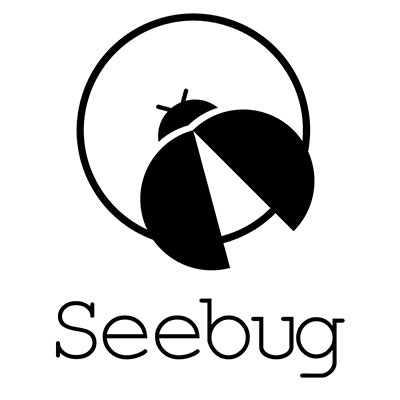# ICS Advisory (ICSA-19-171-01)
## PHOENIX CONTACT Automation Worx Software Suite
Original release date: June 20, 2019 | Last revised: August 05, 2019
[Print Document](javascript:window.print\(\);)
[Tweet](https://twitter.com/share?url=https%3A%2F%2Fus-
cert.cisa.gov%2Fics%2Fadvisories%2FICSA-19-171-01)
[Like Me](https://www.facebook.com/sharer.php?u=https%3A%2F%2Fus-
cert.cisa.gov%2Fics%2Fadvisories%2FICSA-19-171-01)
[Share](http://www.addthis.com/bookmark.php?url=https%3A%2F%2Fus-
cert.cisa.gov%2Fics%2Fadvisories%2FICSA-19-171-01)
### Legal Notice
All information products included in [https://us-cert.gov/ics](/ics) are
provided "as is" for informational purposes only. The Department of Homeland
Security (DHS) does not provide any warranties of any kind regarding any
information contained within. DHS does not endorse any commercial product or
service, referenced in this product or otherwise. Further dissemination of
this product is governed by the Traffic Light Protocol (TLP) marking in the
header. For more information about TLP, see [https://www.us-
cert.gov/tlp/](/tlp/).
* * *
## 1\. EXECUTIVE SUMMARY
* **CVSS v3 7.5**
* **ATTENTION:** Exploitable remotely/low skill level to exploit
* **Vendor:** Phoenix Contact
* **Equipment:** Automation Worx Software Suite
* **Vulnerabilities:** Access of Uninitialized Pointer, Out-of-bounds Read, Use After Free
## 2\. RISK EVALUATION
Successful exploitation of these vulnerabilities could allow an attacker, with
access to an original PC Worx or Config+ project file, to perform remote code
execution.
## 3\. TECHNICAL DETAILS
### 3.1 AFFECTED PRODUCTS
The following components of Automation Worx Software Suite Version 1.86 and
earlier are affected:
* PC Worx
* PC Worx Express
* Config+
### 3.2 VULNERABILITY OVERVIEW
#### 3.2.1 [ACCESS OF UNINITIALIZED POINTER
CWE-824](https://cwe.mitre.org/data/definitions/824.html)
An access of uninitialized pointer vulnerability may allow remote code
execution.
[CVE-2019-12870](http://web.nvd.nist.gov/view/vuln/detail?vulnId=CVE-2019-12870)
has been assigned to this vulnerability. A CVSS v3 base score of 7.8 has been
calculated; the CVSS vector string is
([AV:L/AC:L/PR:N/UI:R/S:U/C:H/I:H/A:H](https://www.first.org/cvss/calculator/3.0#CVSS:3.0/AV:L/AC:L/PR:N/UI:R/S:U/C:H/I:H/A:H)).
#### 3.2.2 [OUT-OF-BOUNDS READ
CWE-125](https://cwe.mitre.org/data/definitions/125.html)
An out-of-bounds read vulnerability may allow remote code execution.
[CVE-2019-12869](http://web.nvd.nist.gov/view/vuln/detail?vulnId=CVE-2019-12869)
has been assigned to this vulnerability. A CVSS v3 base score of 3.3 has been
calculated; the CVSS vector string is
([AV:L/AC:L/PR:N/UI:R/S:U/C:L/I:N/A:N](https://www.first.org/cvss/calculator/3.0#CVSS:3.0/AV:L/AC:L/PR:N/UI:R/S:U/C:L/I:N/A:N)).
#### 3.2.3 [USE AFTER FREE
CWE-416](https://cwe.mitre.org/data/definitions/416.html)
A use after free vulnerability may allow remote code execution.
[CVE-2019-12871](http://web.nvd.nist.gov/view/vuln/detail?vulnId=CVE-2019-12871)
has been assigned to this vulnerability. A CVSS v3 base score of 7.8 has been
calculated; the CVSS vector string is
([AV:L/AC:L/PR:N/UI:R/S:U/C:H/I:H/A:H](https://www.first.org/cvss/calculator/3.0#CVSS:3.0/AV:L/AC:L/PR:N/UI:R/S:U/C:H/I:H/A:H)).
### 3.3 BACKGROUND
* **CRITICAL INFRASTRUCTURE SECTORS:** Critical Manufacturing
* **COUNTRIES/AREAS DEPLOYED:** Worldwide
* **COMPANY HEADQUARTERS LOCATION:** Germany
### 3.4 RESEARCHER
9sg Security Team working with Trend Micro's Zero Day Initiative reported
these vulnerabilities to CISA. CERT@VDE coordinated these vulnerabilities with
Phoenix Contact.
## 4\. MITIGATIONS
Phoenix Contact is currently working on the next version of the Automation
Worx Software Suite. This advisory will be updated with details of the new
version when it becomes available.
Phoenix Contact recommends users exchange project files using only secure file
exchange services, and that project files should not be exchanged via
unencrypted email.
CISA also recommends users take the following measures to protect themselves
from social engineering attacks:
* Do not click web links or open unsolicited attachments in email messages.
* Refer to [Recognizing and Avoiding Email Scams](https://www.us-cert.gov/sites/default/files/publications/emailscams_0905.pdf) for more information on avoiding email scams.
* Refer to [Avoiding Social Engineering and Phishing Attacks](https://www.us-cert.gov/ncas/tips/ST04-014) for more information on social engineering attacks.
CISA reminds organizations to perform proper impact analysis and risk
assessment prior to deploying defensive measures.
CISA also provides a section for [control systems security recommended
practices](https://www.us-cert.gov/ics/Recommended-Practices) on the ICS
webpage on [us-cert.gov](https://www.us-cert.gov/). Several recommended
practices are available for reading and download, including [Improving
Industrial Control Systems Cybersecurity with Defense-in-Depth
Strategies](https://www.us-
cert.gov/sites/default/files/recommended_practices/NCCIC_ICS-
CERT_Defense_in_Depth_2016_S508C.pdf).
Additional mitigation guidance and recommended practices are publicly
available on [the ICS webpage on us-cert.gov](https://www.us-cert.gov/ics) in
the Technical Information Paper, [ICS-TIP-12-146-01B--Targeted Cyber Intrusion
Detection and Mitigation Strategies](https://www.us-cert.gov/ics/tips/ICS-
TIP-12-146-01B).
Organizations observing any suspected malicious activity should follow their
established internal procedures and report their findings to CISA for tracking
and correlation against other incidents.
No known public exploits specifically target these vulnerabilities.


暂无评论